
Nestled in the heart of the ancient city of Thebes, now known as Luxor, Egypt, the Temple of Luxor stands as a testament to architectural ingenuity and spiritual depth. Dedicated to the rejuvenation of kingship, its rich history spans across centuries, offering a window into the opulent past of luxor temple egypt and delivering fascinating luxor temple facts.
As you delve into this article, you'll uncover the mysteries and architectural marvels that make the temple of luxor an enduring symbol of ancient grandeur. From the temple of luxor facts that trace back to its foundation around 1400 BCE to the captivating luxor temple history, prepare to be enthralled by the sheer magnitude and significance of this ancient monument.
Dimensions and Structure
The Temple of Luxor, a beacon of ancient Egyptian architecture, stretches an impressive 260 meters in length. Its grand entrance, a monumental pylon erected by Ramses II, spans 65 meters. This gateway heralds the temple's scale and splendor, setting the stage for the architectural wonders that lie within.
Builders and Historical Contributors
Originally constructed by Amenhotep III who crafted the interior spaces, the temple saw significant expansions under Ramses II, including the outer enclosure. Not only these pharaohs, but figures like Tutankhamun, Horemheb, and even Alexander the Great have imprinted their legacies here, each contributing to the temple's complex history and structure.
Unique Architectural Features
Materials and Preservation
Constructed primarily from Nubian sandstone, the Temple of Luxor is encased by walls of mud-brick, symbolizing the sacred boundary between the divine and the mortal. This choice of materials not only ensured durability but also played a role in the temple's remarkable preservation, allowing it to withstand the sands of time.
Architectural Innovations and Functions
The temple's design reflects advanced engineering and architectural planning of ancient Egypt. Features like the Great Colonnade Hall, which extends nearly 61 meters and includes 28 columns, each 21 feet high, emphasize this aspect. Additionally, the temple was designed with multiple secret rooms, which were used during the feast of Opet for the divine rebirth of the pharaoh, highlighting its religious significance and complex usage.
Continuous Legacy
Despite being buried under Luxor for centuries, the Temple of Luxor has been a continuous site of worship, from its inception dedicated to the god Amun, through its time as a Christian church, and still resonates with spiritual significance today. Its ability to serve as a place of worship across different civilizations and eras speaks volumes about its enduring legacy and architectural prowess.
Foundations and Chronology
Luxor Temple, a cornerstone of ancient Egyptian civilization, was initiated around 1400 BCE during the New Kingdom era. Its construction spanned several reigns, starting with Pharaoh Amenhotep III and completed by notable successors such as Tutankhamun, Horemheb, and significantly expanded by Ramses II. This timeline not only reflects the temple's architectural evolution but also its enduring significance across different reigns.
Dedicated to Kingship and Divine Rebirth
Unlike many ancient temples dedicated solely to deities, Luxor Temple holds a unique place as it was primarily dedicated to the rejuvenation of kingship. This focus is vividly celebrated during the annual Opet Festival, a significant event where statues of the deities Amun, Mut, and Khonsu were paraded from Karnak to Luxor, symbolizing the divine legitimacy and renewal of the pharaoh’s power.
Role as a Religious Capital
Until the Greek period, Luxor Temple served as the religious epicenter of Egypt, located in Thebes, the then capital. The temple was dedicated to the Theban triad: Amun, his consort Mut, and their son Khonsu, highlighting its spiritual prominence. The site was revered as "the place of the First Occasion," where the god Amun experienced rebirth, mirroring the pharaoh’s annually reenacted coronation ceremony.
Architectural and Cultural Legacy
The temple's construction narrative is a testament to its historical and cultural significance. Over centuries, various pharaohs including Amenhotep III, Ramses II, and Tutankhamun contributed to its grandeur, each adding layers of architectural and spiritual depth. The temple not only served as a spiritual hub but also as a place of political importance where many pharaohs were crowned, further embedding its role in Egypt's dynastic history.
Continuous Use and Scholarly Study
Luxor Temple's significance extends beyond ancient times; it remained a vital community center through subsequent periods, including Roman and Coptic phases. The philosopher and Egyptologist R.A. Schwaller de Lubicz's twelve-year study underscores the temple as an architectural encyclopedia of ancient knowledge, attesting to its complex symbolism and enduring scholarly intrigue. Today, Luxor Temple still captivates visitors, continuing its legacy as a living site of worship and historical reflection.
Essential Tips for Your Visit
1. Best Times for a Visit
To make the most of your visit to Luxor Temple, aim to arrive early in the morning or schedule your tour late in the afternoon. These times avoid the peak sun and often have fewer crowds, providing a more comfortable and intimate experience.
2. Admission Details
The entrance fee is set at approximately 140 EGP for adults and 70 EGP for students. Ensure you have the correct amount and consider the benefits of a guided tour for a more enriching visit.
3. Dress Appropriately
When visiting, modest attire is advised. Long pants or skirts and shirts with sleeves are suitable and respectful, especially since the temple complex includes active religious sites like the Abu Haggag Mosque.
Practical Insights for Comfort and Convenience
4. Comfort and Accessibility
The temple is accessible to visitors with disabilities, featuring ramps and elevators. Comfortable walking shoes are a must, as you'll be exploring mostly on foot.
5. Stay Hydrated and Protected
Luxor's climate can be very warm, making it essential to stay hydrated and protected from the sun. Bring water and sunscreen, and perhaps a hat, to ensure your focus remains on the awe-inspiring sights.
6. Photography Etiquette
Photography is allowed within Luxor Temple, but remember to turn off your flash to preserve the integrity of the site and respect other visitors' experiences.
Cultural Considerations and Additional Tips
7. Engaging with Local Culture
Bargaining is a part of the shopping experience in Egypt. If you're looking to take souvenirs home, be prepared to negotiate prices. This is part of the fun but requires a bit of skill and patience.
8. Religious and Historical Layers
The temple’s rich tapestry of religious significance is palpable, with the Abu Haggag Mosque situated atop ancient columns. This site also includes remnants of a Christian church, showcasing the layers of religious history embedded within the temple walls.
By following these guidelines, your visit to Luxor Temple will not only be enjoyable but also deeply informative, allowing you to fully immerse yourself in the historical and cultural magnificence of this ancient wonder.
Tourists love visiting the Temple of Luxor for several reasons. Here are a few key factors that make it a popular attraction:
Overall, the Temple of Luxor offers a unique blend of history, architecture, and cultural significance that captivates tourists. It allows them to step back in time and witness the grandeur of ancient Egypt firsthand.
Explore the Richness of Nearby Temples and Attractions
When you visit the Temple of Luxor, you are stepping into a vast landscape of historical and cultural treasures. Let's explore some of the most significant nearby sites that you should consider adding to your itinerary:
Just a short walk from Luxor Temple, connected by the majestic Avenue of the Sphinxes, lies the Karnak Temple Complex. This site is not only a UNESCO World Heritage Site but also the largest religious building ever constructed. The construction of Karnak spanned over 2,000 years, starting in the Old Kingdom and continuing until the Ptolemaic era. It's the second most visited site in Egypt, offering attractions like the Open Air Karnak Museum. The complex is known for its grandeur and the Sound & Light Show, which provides a spectacular evening experience, although it's not highly recommended due to mixed reviews.
Dedicated to one of Egypt’s most formidable female pharaohs, the Mortuary Temple of Hatshepsut at Deir el-Bahri offers a glimpse into the New Kingdom's architectural innovation. This site is renowned for its dramatic cliffside location and the story of Hatshepsut, a ruler who portrayed herself as a male king in many of her depictions to assert her authority.
A short drive from Luxor, the Valley of the Kings is an essential visit for anyone fascinated by Egypt’s royal past. This burial site for pharaohs and powerful nobles of the New Kingdom contains 63 known tombs, intricately decorated with hieroglyphics and paintings. While some tombs are open to the public, others remain closed to preserve their precious contents.
Lesser-known but equally intriguing, the Valley of the Queens serves as the burial site for the wives and children of pharaohs. About 90 tombs have been discovered here, many adorned with beautiful decorations. Like the Valley of the Kings, visitors can explore several tombs, though access is sometimes restricted to protect the site’s integrity.
The mortuary temple of Ramses II, also known as the Ramesseum, showcases the legacy of what many consider the most powerful pharaoh. Although the temple has suffered from centuries of damage, it remains a profound place to learn about Ramses II's reign and features vividly colored art and deeply-engraved hieroglyphics.
Additional Insights
Each of these sites offers unique insights into ancient Egyptian culture and religious practices. From the grand architectural statements of the Karnak Temple Complex to the intimate tombs in the Valley of the Queens, these attractions provide a comprehensive view of ancient Egyptian life and beyond. Whether you are a history enthusiast or a curious traveler, these sites promise to enrich your understanding of this ancient civilization.
Through this exploration of the Temple of Luxor, we've traversed centuries, uncovering the depth of its architectural splendor and the richness of its storied past. We've seen how this monument not only epitomizes ancient Egyptian ingenuity but also serves as a cultural and religious beacon, with its history reflecting the complexities of successive eras from Amenhotep III’s foundational contributions to the multifaceted expansions by Ramses II. The temple's intricate design, its role in the rejuvenation of kingship, and the annual Opet Festival vividly highlight its enduring significance in the socio-political and spiritual life of ancient Egypt.
Furthermore, the broader implications of the Temple of Luxor's legacy, as evidenced by its continuous use and the scholarly attention it commands, underscore its universal value. Its ability to fascinate, inspire, and educate offers a testament to the timeless allure of Luxor's heritage. As we reflect on the insights gained from visiting this ancient marvel and the surrounding attractions, the invitation to delve deeper into the mysteries and achievements of ancient Egypt remains open—a journey not just of historical discovery but of connecting with the profound human endeavors encoded in stone and spirituality across millennia.
Remember, Egypt has a rich and diverse history, and these are just a few suggestions for luxor temple surroundings. There are many other fascinating places to explore in cairo, such as giza pyramids, egyptian Museum, and old cairo. Let us to plan your itinerary based on your interests and the time you have available.
Read Also:
“In my opinion, I believe a good writer makes content easy to read, and entertains the reader, making comprehension effortless.
By Kate Clark.webp.webp&w=3840&q=60)
Discover Egypt with this exclusive five-day Cairo and Luxor tour. Experience the Egyptian history by visiting pyramids a ...
$ 589 | Per Person
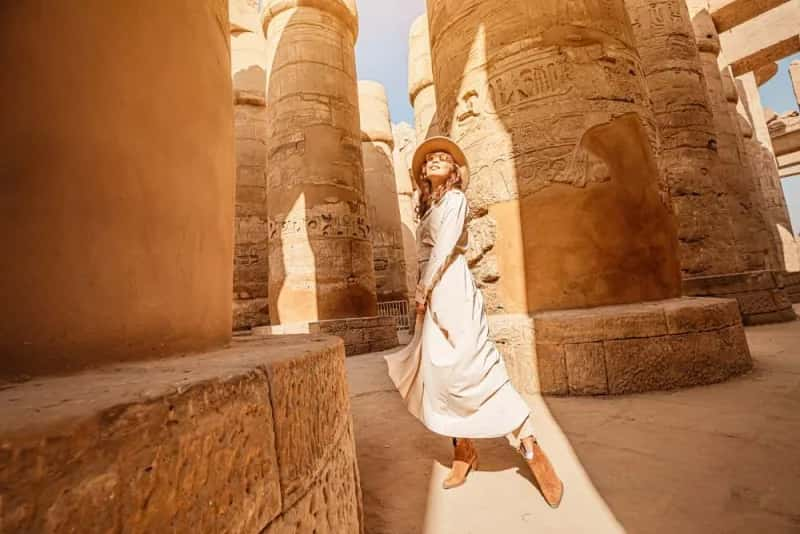
Book this Egypt Budget Tour and enjoy 8 days Cairo and Nile cruise tour package at the best price with 5 star quality ac ...
$ 1139 | Per Person
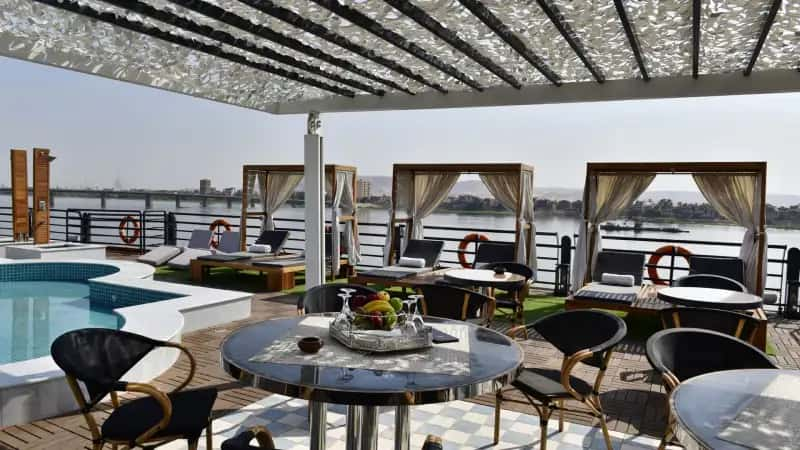
Sail the nile between Luxor and Aswan onboard MS Mayfair Nile cruise and don't miss out on the best travel experience in ...
$ 699 | Per Person

Enjoy luxurious accommodation while sailing the Nile River between Luxor and Aswan aboard MS Farah nile cruise. Book Tod ...
$ 699 | Per Person

Cruise the nile aboard MS Movenpick Royal Lily Nile Cruise & Explore the wonders of the ancient Egypt along the Nile Riv ...
$ 699 | Per Person
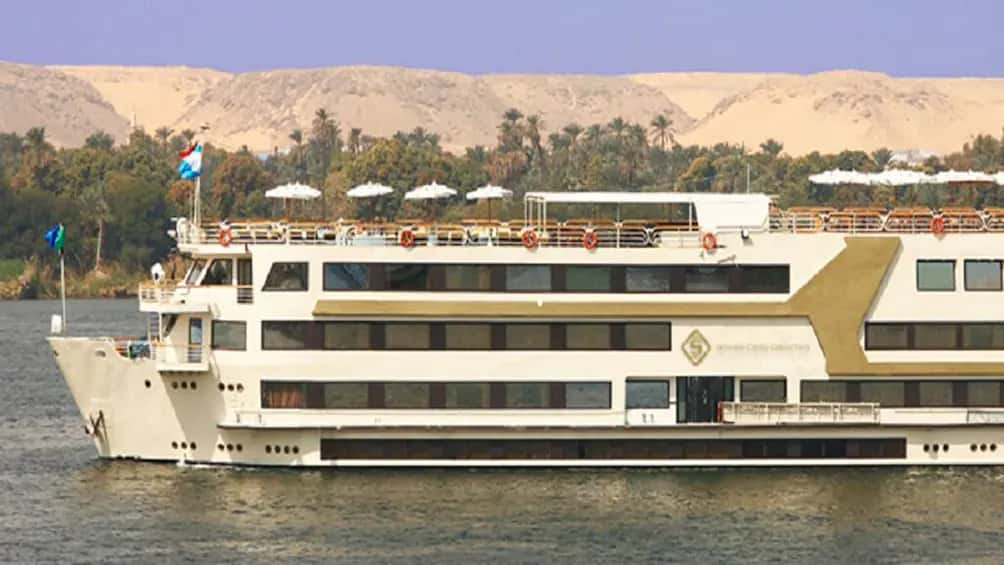
Discover the treasures of the Nile Valley aboard the magical cruise ship MS Nile Goddess and Visit the most famous and h ...
$ 649 | Per Person

Steigenberger Minerva Nile Cruise: Enjoy sailing the Nile River between Luxor and Aswan aboard the fascinating Steigenbe ...
$ 599 | Per Person

Cruise the Nile aboard the MS Moon Dance with its modern 5-star luxury design & sails and Visit the best attractions on ...
$ 599 | Per Person
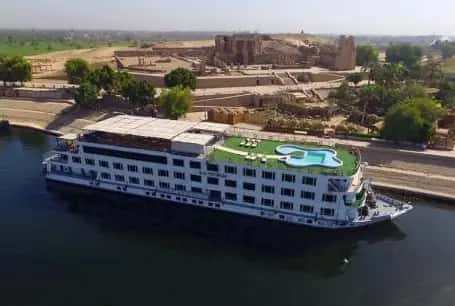
Nile Premium Cruise: Sail the Nile between Luxor and Aswan aboard the Ms Nile Premium Cruise. Live the magic of the past ...
$ 599 | Per Person
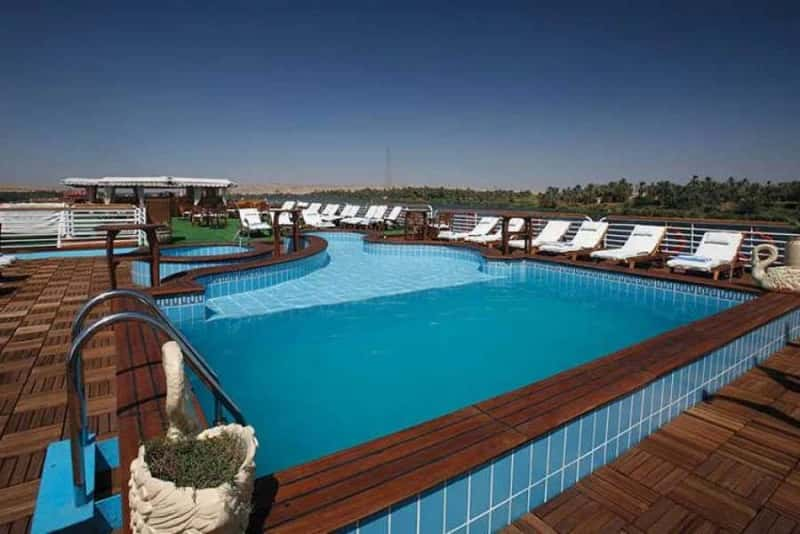
Amarco Nile Cruise: MS Amarco 1 is an award-winning Nile cruise ship sailing between Luxor and Aswan visiting the most b ...
$ 599 | Per Person
-1.webp.webp&w=3840&q=60)
This Egypt Itinerary 8 Days Cairo and Nile cruise package is the best Egypt tour travelers book. Visit the best of Egypt ...
$ 1299 | Per Person
.webp.webp&w=3840&q=60)
The best Egypt Vacation Package: 11 day Egypt Trip Package. Starting by ancient Cairo, Cruising the Nile then relax on t ...
$ 2199 | Per Person
.webp.webp&w=3840&q=60)
This 12 Day Cairo, Nile Cruise, Sharm El Sheikh tour in Christmas and New Year is the best option for you visiting the t ...
$ 2699 | Per Person
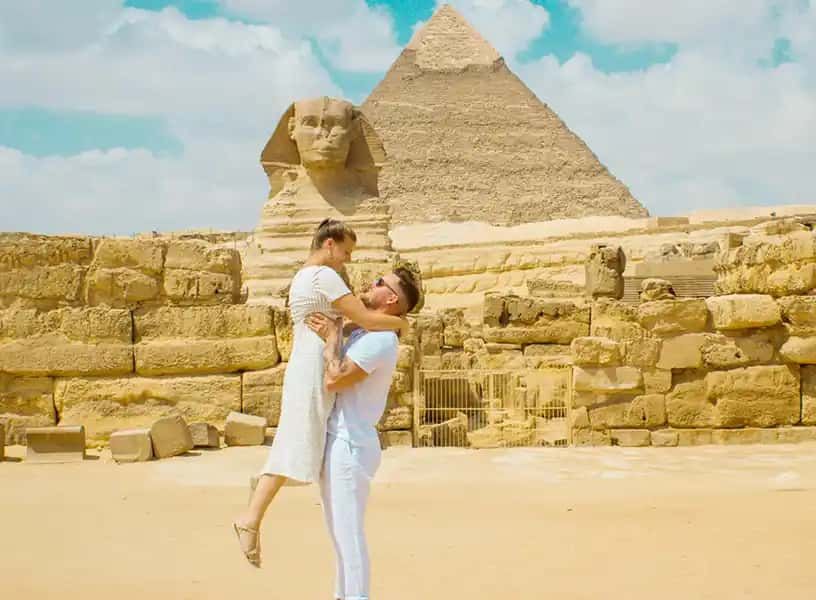
A romantic Egypt Honeymoon Trip. Visit the Pyramids and Sphinx with Nile cruise adventure in Luxor and Aswan watching li ...
$ 999 | Per Person
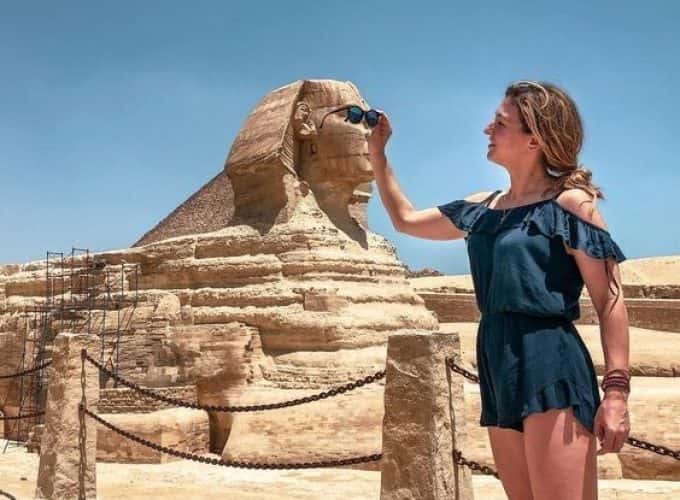
if you want to spend New Years in Egypt This 8-day Cairo and Nile cruise package is one of the best Egypt new year offer ...
$ 1799 | Per Person